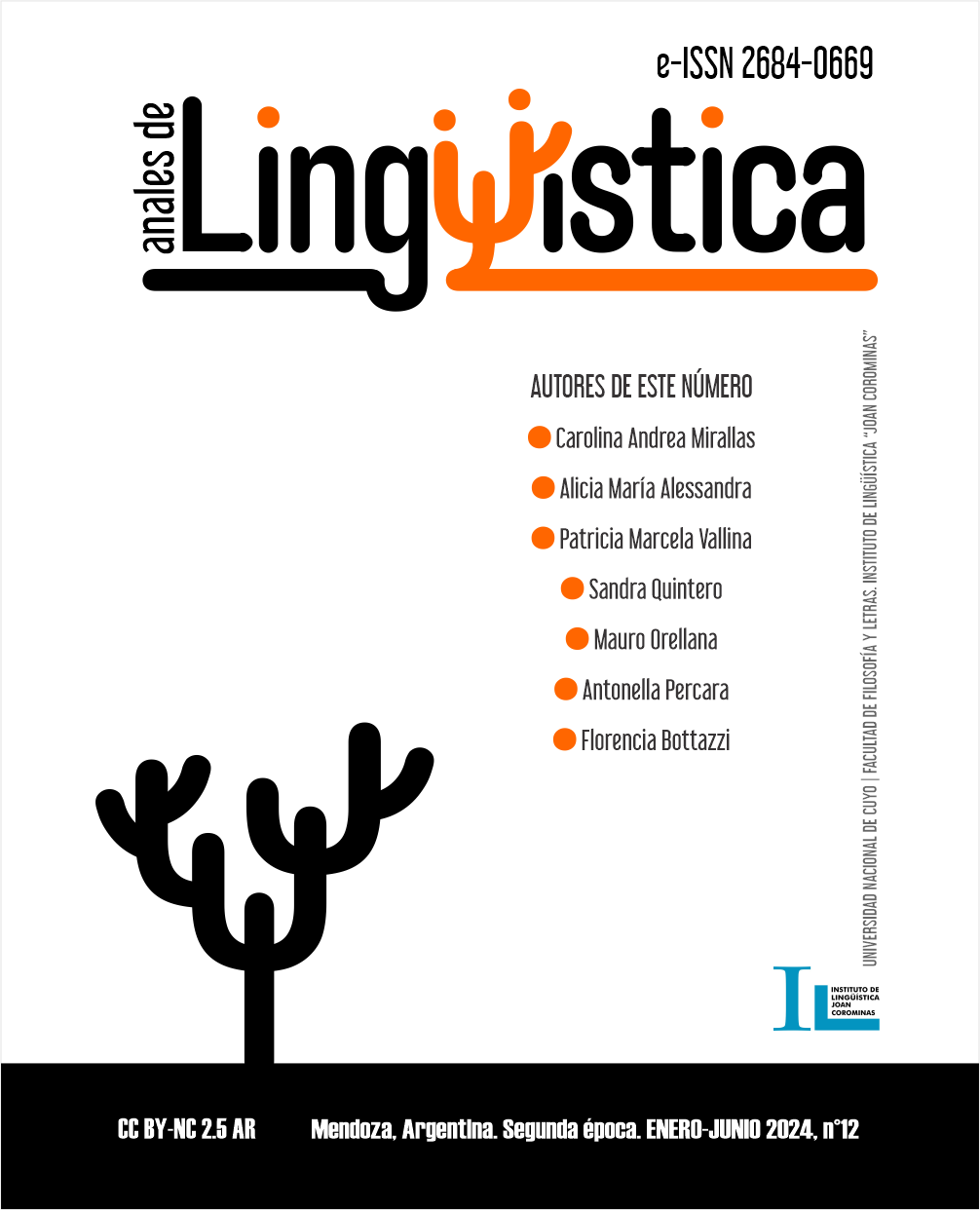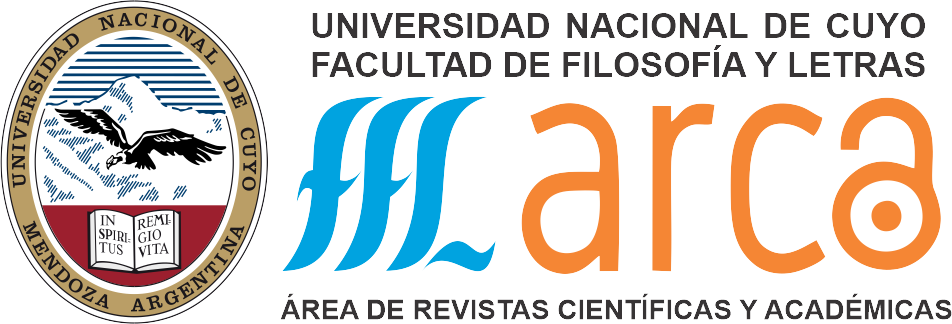Protest and claim in the school linguistic landscape
Keywords:
linguistic landscape, microdiscourse, top down, bottom upAbstract
These lines include the main activities carried out as members within the framework of the Regional Language Observatory research project: Language in the landscape of Mendoza schools. This research, which began in 2019, records, describes and analyzes the different linguistic expressions of the exterior and interior landscape of urban Mendoza schools.
We understand linguistic landscape (hereinafter, PL) to be any text written on streets, buildings and publicly accessible sites such as billboards, advertisements, graffitis, among others, and that manifest a special use of language linked to social, informative and symbolic functions. It is a marker of the power and status of the linguistic communities that inhabit a territory (Laundry and Bourhis: 1997).
The analysis carried out on the PL of the Teaching Application Department, UNCuyo (hereinafter DAD) conforms to the theoretical and methodological guidelines proposed by various authors, such as Rodrigue Landry and Richard Bourhis (1997), Muñoz Carrobles (2010), Pons Rodríguez (2012), Mónica Castillo Lluch and Daniel Sáez Rivera (2013). This analysis is also enriched with knowledge of cognitive linguistics.
This research is exploratory. The corpus is made up of photos of posters, signs, graffiti, writings on exterior and interior walls of the DAD produced in September 2021, as a consequence of a conflictive situation that arose in the Institution and that had a strong impact on the entire educational community of the school. The unit of analysis considered is the microdiscourse, a unit of the language in use put into use in effective communication situations.
We can affirm that there is always PL and that it is changing and responds to the needs of the speakers and specific communicative situations. In this way, it is observed that the PL is a framework that is modified according to the concerns, needs, interests, emotions and thoughts of the communities that contain it. We conclude that in the external and internal PL of the DAD, a marked freedom of expression of adolescents is manifested and the way in which it is made visible.
References
Backhaus, P. (2006). Linguistic Landscapes: a comparative study of Multilinguism in Tokyo. Multilingual Matters.
Ben Raffael, E., Amara, M. y Shohamy, E. (2006). Linguistic Landscape as Symbolic construction of the Public Space: The case of Israel. International Journal of Multilinguism, 3 (1), 7-30.
Castillo Lluch, M. y Sáez Rivera, D. (2011). Introducción al paisaje lingüístico de Madrid. Lengua y migración, 3 (1), 73-88.
Hipperdinger, Y. (2020). Paisaje lingüístico institucional en el área dialectal bonaerense: La promoción de la enseñanza de lenguas. Cuadernos de Literatura. Revista de Estudios Lingüísticos y Literarios, 15, 50-62.
Landry, R., y Bourhis, R. (1997). Linguistic Landscape and Ethnolinguistic Vitality: An empirical studio. Journal of Language and Social Psychology. 16 (1), 23-49.
Muñoz Carrobles, D. (2010). Breve itinerario por el paisaje lingüístico de Madrid. Ángulo recto. Revista de estudios sobre la ciudad como espacio plural , 2 (2), pp. 103-109. https://www.academia.edu/105913131/Breve_itinerario_por_el_paisa je_ling%C3%BC%C3%ADstico_de_Madrid?uc-sb-sw=24139892
Pons Rodríguez, L. (2012). El paisaje lingüístico de Sevilla y variedades en el escenario urbano hispalense. Diputación de Sevilla.
Ullmann, S. (1967). Semántica. Introducción a la ciencia del significado. Aguilar.
Downloads
Published
How to Cite
Issue
Section
License
Copyright (c) 2024 Alicia María Alessandra, Patricia Marcela Vallina
Esta obra está bajo una Licencia Creative Commons Atribución 2.5 Argentina.
Los/as autores/as que publican en esta revista están de acuerdo con los siguientes términos:
1. Los/as autores conservan los derechos de autor y garantizan a la revista el derecho de ser la primera publicación del trabajo bajo una licecncia Creative Commons Atribución 2.5 Argentina (CC BY 2.5 AR) . Por esto pueden compartir el trabajo con la referencia explícita de la publicación original en esta revista.
2. Anales de lingüística permite y anima a los autores a difundir la publicación realizada electrónicamente, a través de su enlace y/o de la versión postprint del archivo descargado de forma independiente.
3. Usted es libre de:
Compartir — copiar y redistribuir el material en cualquier medio o formato
Adaptar — remezclar, transformar y construir a partir del material para cualquier propósito, incluso comercialmente.












